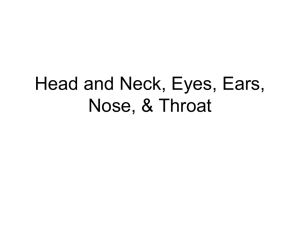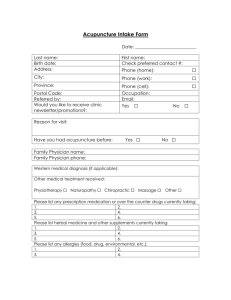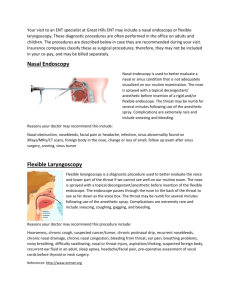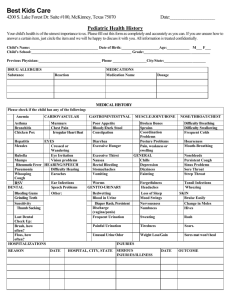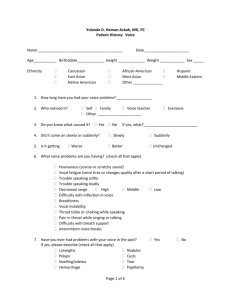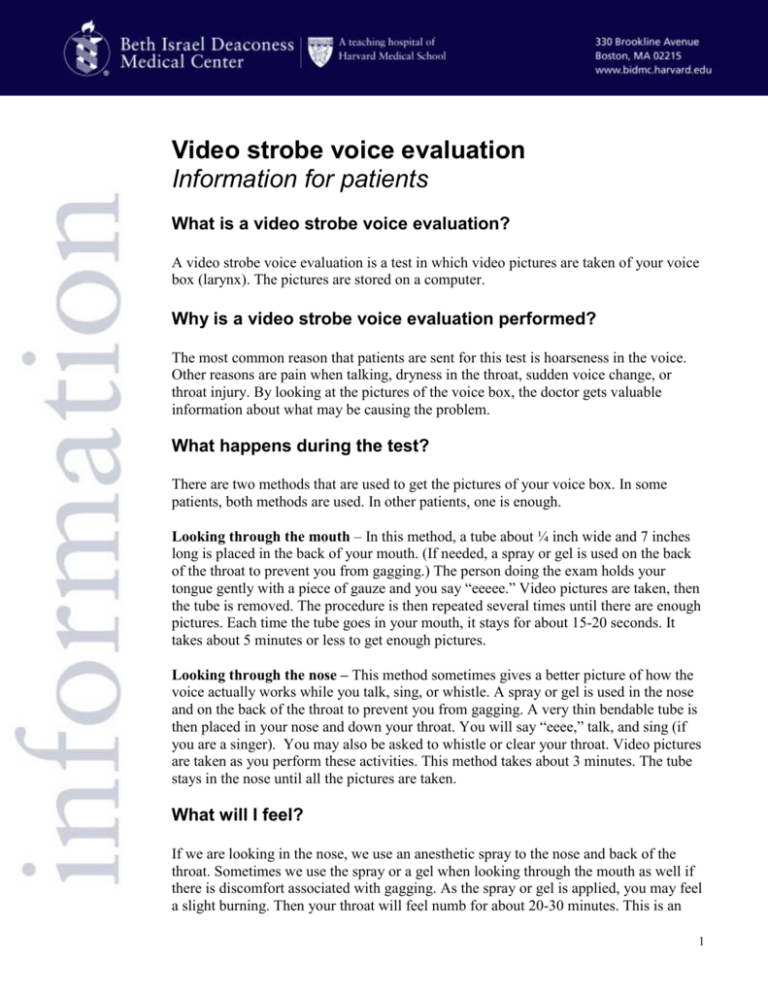
Video strobe voice evaluation
Information for patients
What is a video strobe voice evaluation?
A video strobe voice evaluation is a test in which video pictures are taken of your voice
box (larynx). The pictures are stored on a computer.
Why is a video strobe voice evaluation performed?
The most common reason that patients are sent for this test is hoarseness in the voice.
Other reasons are pain when talking, dryness in the throat, sudden voice change, or
throat injury. By looking at the pictures of the voice box, the doctor gets valuable
information about what may be causing the problem.
What happens during the test?
There are two methods that are used to get the pictures of your voice box. In some
patients, both methods are used. In other patients, one is enough.
Looking through the mouth – In this method, a tube about ¼ inch wide and 7 inches
long is placed in the back of your mouth. (If needed, a spray or gel is used on the back
of the throat to prevent you from gagging.) The person doing the exam holds your
tongue gently with a piece of gauze and you say “eeeee.” Video pictures are taken, then
the tube is removed. The procedure is then repeated several times until there are enough
pictures. Each time the tube goes in your mouth, it stays for about 15-20 seconds. It
takes about 5 minutes or less to get enough pictures.
Looking through the nose – This method sometimes gives a better picture of how the
voice actually works while you talk, sing, or whistle. A spray or gel is used in the nose
and on the back of the throat to prevent you from gagging. A very thin bendable tube is
then placed in your nose and down your throat. You will say “eeee,” talk, and sing (if
you are a singer). You may also be asked to whistle or clear your throat. Video pictures
are taken as you perform these activities. This method takes about 3 minutes. The tube
stays in the nose until all the pictures are taken.
What will I feel?
If we are looking in the nose, we use an anesthetic spray to the nose and back of the
throat. Sometimes we use the spray or a gel when looking through the mouth as well if
there is discomfort associated with gagging. As the spray or gel is applied, you may feel
a slight burning. Then your throat will feel numb for about 20-30 minutes. This is an
1
odd sensation but is not painful. You might have a little difficulty swallowing, which
also feels strange.
As the tube is put into your mouth or throat, there may be some mild discomfort but no
pain. The tube is in for a very short period.
Who performs a video strobe voice evaluation?
The evaluation is done by a speech therapist specializing in voice problems. The
therapist receives special training to do this test.
What are the risks?
There are some risks involved in the use of nasal endoscopes, oral endoscopes, and
topical anesthetics.
The oral endoscope (the tube that goes into the mouth) is rigid and could therefore
cause bruising in the mouth or throat or chip the teeth. However, if the patient is seated
with the head in a stable position, damage to the teeth and/or the inside of the mouth is
highly unlikely. More commonly, the presence of the rigid tube in your mouth may
cause gagging.
The flexible endoscope (the tube that goes into the nose) may cause some discomfort as
it passes through the most narrow part of the nose. It may irritate the nasal passage and
cause mild bleeding or bloody mucous secretions. The flexible endoscope may also
cause gagging.
The manufacturer of the anesthetic lists the risks as the following:
Central nervous system: lightheadedness; nervousness; apprehension; euphoria;
confusion; dizziness; drowsiness; tinnitus (ringing in the ears); blurred or double vision;
vomiting; sensations of heat, cold or numbness; twitching; tremors; convulsions;
unconsciousness; respiratory depression and respiratory arrest.
Cardiovascular system: bradycardia (slow heart rate), hypotension (low blood
pressure), and cardiovascular collapse which may lead to cardiac arrest.
Allergic: cutaneous lesions (sores on the skin), urticaria (itching), edema (swelling), or
anaphylactoid reactions (a severe allergic reaction). Allergic reactions as a result of
sensitivity to the anesthetic are extremely rare.
2
How do I prepare for this test?
No preparation is needed. You may eat, and drink as usual, and take all your usual
medications.
How long will the evaluation take?
A visit for a video strobe evaluation test takes about one hour. You will be scheduled
for a second visit to complete additional non-invasive voice testing and to review the
findings of the video strobe.
How will I feel after the test?
You should feel like your usual self after the test. There is no discomfort.
If you have had anesthesia to the throat, it is important that you do not eat or
drink until the effects of the anesthetic have worn off. This is usually about 20-30
minutes.
How will I learn the results of my video strobe voice
evaluation?
An ENT (ear, nose, and throat) doctor will view your video within a week after your
test is done. Then, you will be scheduled to come back to the hospital to meet with the
voice specialist to discuss your results and any recommendations for treatment or
follow-up. During that second visit, the voice specialist will do some additional, noninvasive tests on your voice.
A written report of your evaluation will be sent to your doctor. You may be asked to
schedule an appointment with your doctor to discuss the results further.
3
This material was developed by clinicians from the department of speech therapy at Beth Israel Deaconess Medical Center. It is
produced and distributed by The Beth Israel Deaconess Learning Center. ©2009, Beth Israel Deaconess Medical Center. All rights
reserved.
MC0799 REV 11/09
4

